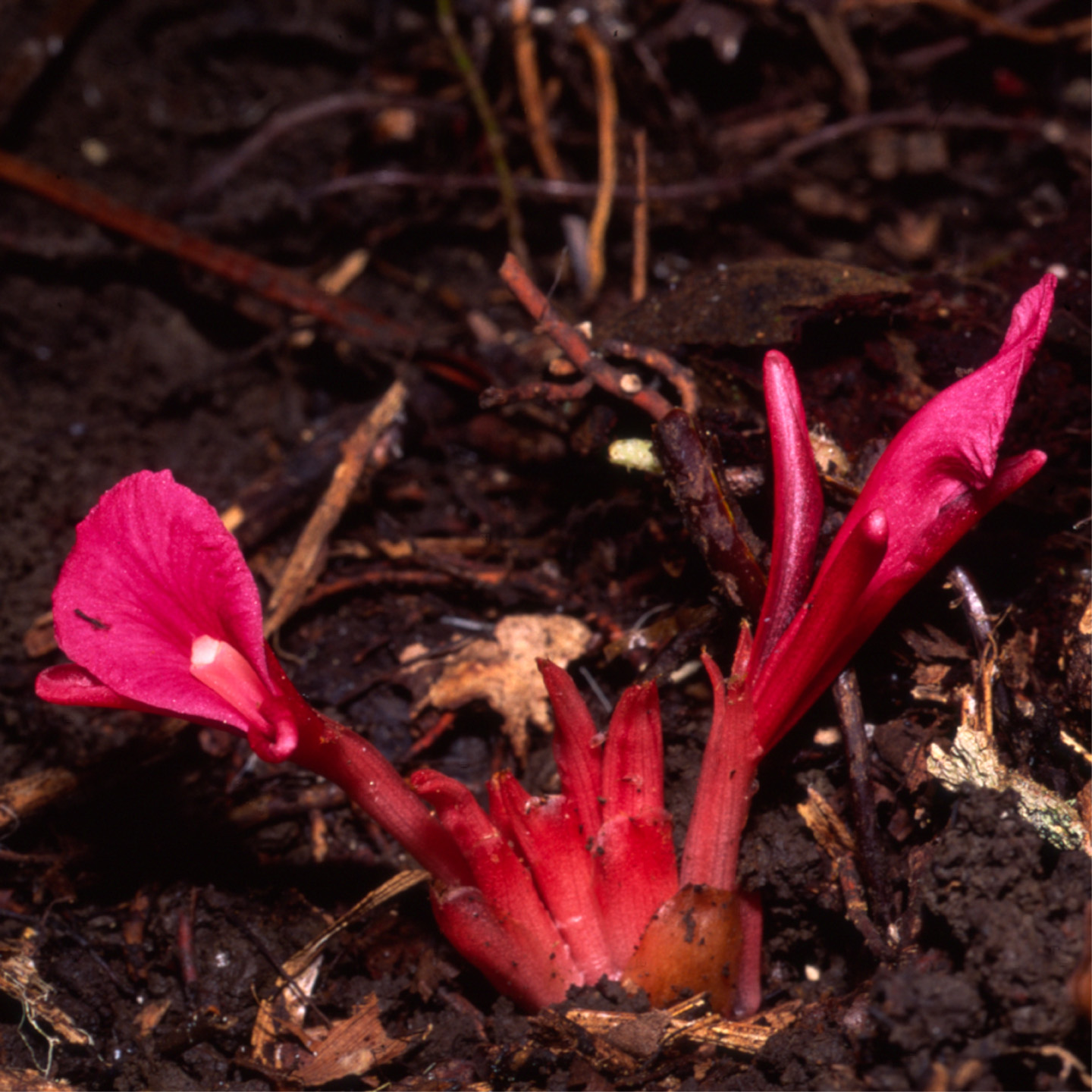Gingers on tropical islandsGingers on tropical islands
Axel Dalberg Poulsen
Research Associate, Royal Botanic Garden Edinburgh
Email: axel@dalbergpoulsen.com
What is a ginger?
Gingers belong to the family Zingiberaceae which consists of small and very large (up to 10 m tall) herbaceous plants. The family is especially rich in species in SE Asia and includes about 30 genera and more than 1600 published scientific names. But the systematics of gingers is far from completed.
What can gingers be used for?
Ginger species play an important ecological role in the understorey of tropical forests. Many species are also of great economic value in local markets and internationally as vegetable, spice (cardamom, turmeric etc), medicine etc. Gingers are often very attractive and used as ornamentals in tropical gardens or for the cut flower industry.
Because of their wide distribution, morphological variation and great species richness, several genera are obvious candidates in a model study elucidating scientific questions of more general interest regarding evolutionary processes and the influence of geographical barriers for speciation.
Where will the ginger research take place?
1) Salomon Islands, 18 Nov – 15 Dec 2006.
After a few days preparation in Honiara, we will commence the fieldwork in Makira. The ginger project collaborates closely with the zoologists on The Bird Diversification Project, and we will be in the forest together sharing the base camp. From there local botanists and I will survey the surroundings for any ginger species. My local counterpart in Honiara is Fred Pitisopa.
2) Papua New Guinea, 15 Dec – late Jan 2007.
Based at Lae, we shall make fieldtrips, first to the Admiralty Islands including Manus. Subsequently to West New Britain and possibly a third island not yet decided upon.
My local counterpart is Billy Bau from the Forest Research Institute in Lae. He is a forester and we have done fieldwork together in PNG in 2001.
Why go there?
In SE Asia, I have so far collected several gingers. In August this year, I published 18 new species from Borneo alone. But in large parts of Eastern Malesia (east of Wallace’s Line) very few gingers have been collected and the latest revision for this area is already 100 years old. During the ginger project in Galathea 3 we will attempt to document all species encountered in the above-mentioned areas.
Is the project on board the main ship?
The ginger project is land-based and the itinerary of the Expedition Ship ‘Vædderen’ is no longer close to the islands where the inventories will take place. Thus the project will not be on board during the fieldwork. Axel will, however, try to meet the ship at Gizo, Solomon Islands, on 29 Dec to inform other participants and the media on our preliminary results. This will be subject to completing the activities on Manus and nearby islands in time.
What do we do in the forest?
First of all permits and visa have been secured months ago. The fieldwork will be carried out in collaboration with local botanists and peoples and the material collected will include:
1) Herbarium material: plants will be pressed in old newspapers in the field and preserved in alcohol in plastic bags. Later they will be dried but delicate flowers and fruits will remain in bottles for later detailed studies and dissections.
2) DNA samples to be used in the molecular lab.
3) Photographs, which always describe the appearance of delicate ginger flowers far better than can be understood from a hundred words.
4) Information on local names and uses before this information is lost.
What are the expected results?
The material obtained during the expedition will be contribute to elucidate
1) how many species of gingers exists,
2) their correct scientific names,
3) how to recognize them, and
4) how they have evolved (in comparison with other ginger species in e.g. western Malesia.
It is expected that several new species will be discovered but it is equally significant that collections from these poorly investigated islands will contribute to an increased understanding of the morphology of species that have already been described in the past.
The dried and pickled material will be kept in Herbaria in the country of origin, Scotland and Denmark, as documentation and for more detailed later studies e.g. under the microscope. The collections are important as reference in scientific publications (e.g. Gingers of Solomon Islands) and will be important components in revisions of the generic delimitation of difficult groups of gingers, such as Alpinia.
Colour photographs will be used in booklets to create interest and awareness amongst the general public. These will, combined with the ethnobotanical information, hopefully create increased understanding for the conservation of natural resources in the area.

Some species of gingers, like this Etlingera, has the inflorescence at the base and the flowers are only open one day. Photograph: Axel Dalberg Poulsen, PNG, 2001.
The project is funded by:
Carlsbergfondet
TK Foundation
Det Østasiatiske Kompagnis Almennyttige Fond
Torben & Alice Frimodts Fond
|